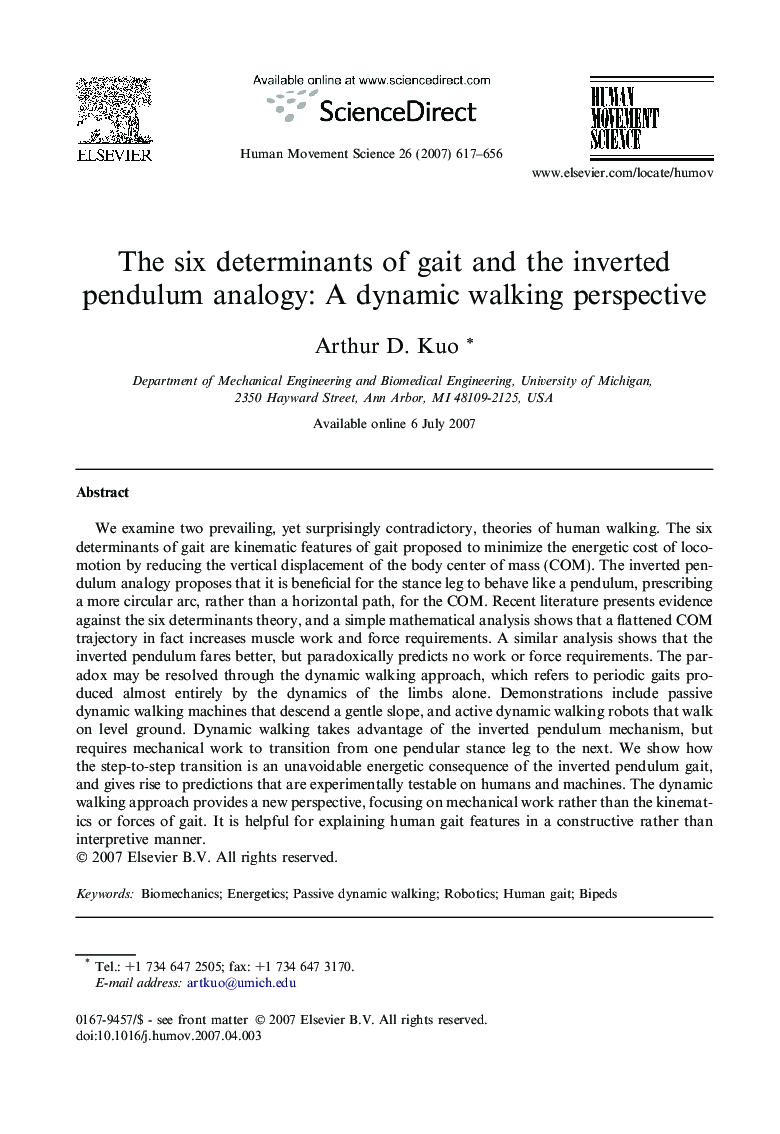| Article ID | Journal | Published Year | Pages | File Type |
|---|---|---|---|---|
| 928827 | Human Movement Science | 2007 | 40 Pages |
We examine two prevailing, yet surprisingly contradictory, theories of human walking. The six determinants of gait are kinematic features of gait proposed to minimize the energetic cost of locomotion by reducing the vertical displacement of the body center of mass (COM). The inverted pendulum analogy proposes that it is beneficial for the stance leg to behave like a pendulum, prescribing a more circular arc, rather than a horizontal path, for the COM. Recent literature presents evidence against the six determinants theory, and a simple mathematical analysis shows that a flattened COM trajectory in fact increases muscle work and force requirements. A similar analysis shows that the inverted pendulum fares better, but paradoxically predicts no work or force requirements. The paradox may be resolved through the dynamic walking approach, which refers to periodic gaits produced almost entirely by the dynamics of the limbs alone. Demonstrations include passive dynamic walking machines that descend a gentle slope, and active dynamic walking robots that walk on level ground. Dynamic walking takes advantage of the inverted pendulum mechanism, but requires mechanical work to transition from one pendular stance leg to the next. We show how the step-to-step transition is an unavoidable energetic consequence of the inverted pendulum gait, and gives rise to predictions that are experimentally testable on humans and machines. The dynamic walking approach provides a new perspective, focusing on mechanical work rather than the kinematics or forces of gait. It is helpful for explaining human gait features in a constructive rather than interpretive manner.
